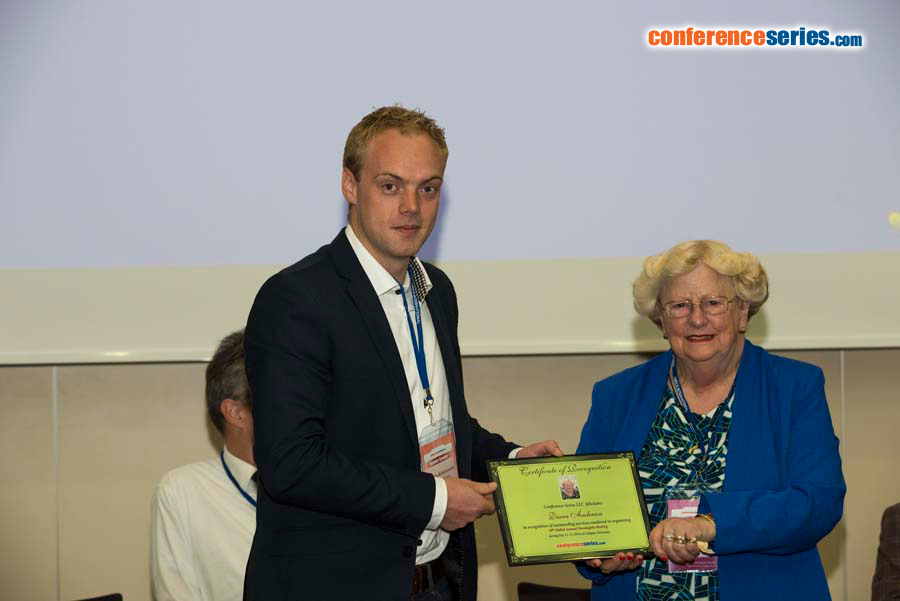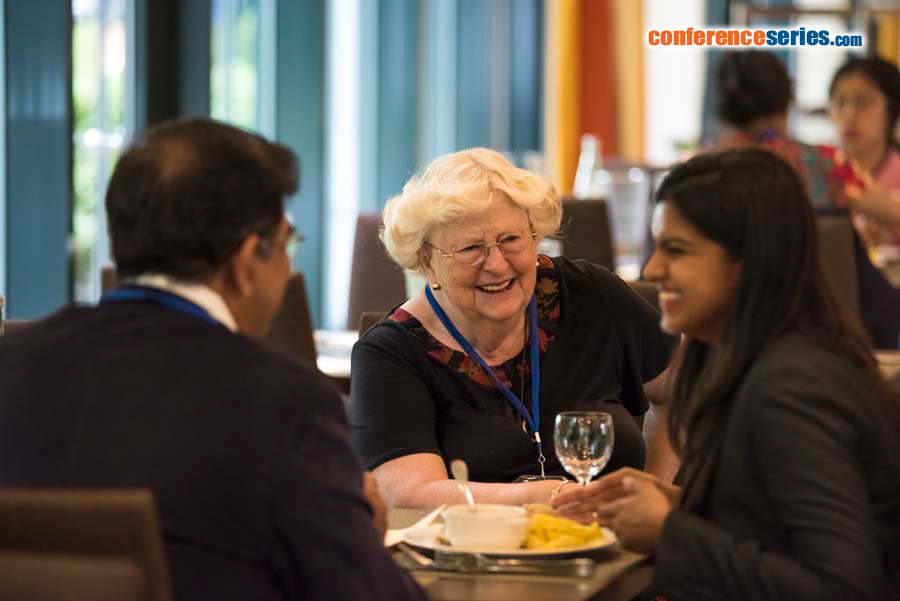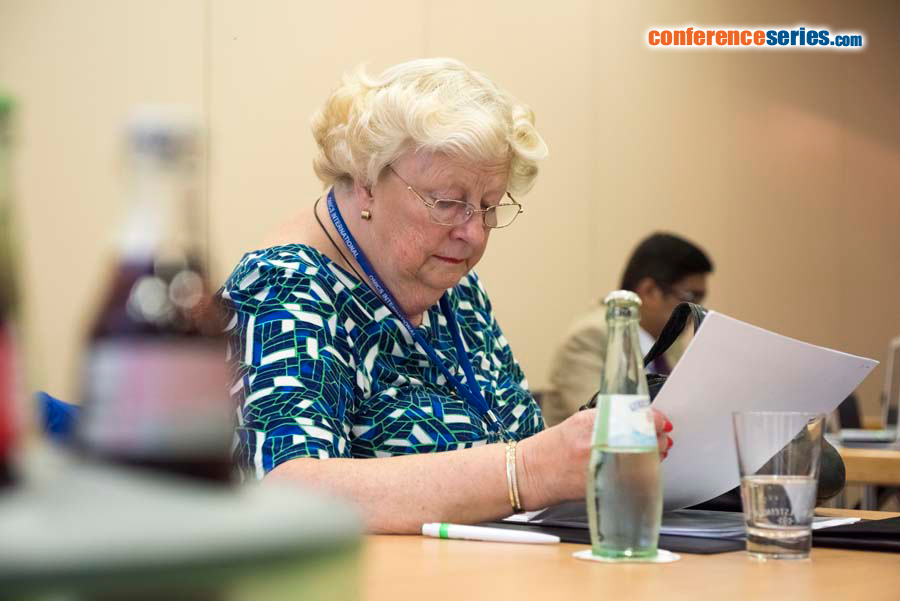
Diana Anderson
University of Bradford,UK
Title: Sensitivity and Specificity of the Empirical Lymphocyte Genome Sensitivity (LGS) Assay: Implications for Improving Cancer Diagnostics
Biography
Biography: Diana Anderson
Abstract
Background: This study examined differences in the sensitivity to genomic damage of lymphocytes derived from cancer patients, pre/suspect cancer patients and normal healthy volunteers. rnrnMethods: We investigated responses from 208 individuals: 20 melanoma, 34 colon cancer, 4 lung cancer patients (58); 18 suspect melanoma, 28 polyposis, 10 COPD patients (56) and 94 healthy volunteers. The natural logarithm of the Olive tail moment was plotted for exposure to UVA through 5 different agar depths (100 cell measurements/depth) and analysed using a repeated measures regression model.rnrnFindings: Genomic damage in lymphocytes from cancer patient samples plateaued and did not decrease as UVA intensity decreased. In comparison, lymphocyte response patterns for healthy individuals returned towards control values as UVA intensity decreased. The responses for samples from pre/suspected cancers patients were intermediate. All cancers tested exhibited comparable responses. Results indicated that lymphocyte sensitivity was cancer status dependant, thus an analyses of Receiver Operating Characteristic curves was undertaken on 208 individuals. The mean log Olive tail moments, for all cancers plus pre/suspected-cancer versus controls gave a value for the area under the curve of 0.87 (95% CI: 0.82, 0.92); for cancer versus pre/suspected-cancer plus controls the value was 0.89 (95% CI: 0.83, 0.95); and for cancer alone versus controls alone (excluding pre/suspected-cancer), the value was 0•93 (95%CI: 0.88, 0.98). For all 3 values, p<0.001. Interpretation: Results indicated that characterisation of differences in lymphocyte sensitivity to UVA enabled discrimination between cancer patients, pre/suspect cancer patients and healthy volunteers. This relationship could be used in an assay that functions as a stand-alone test or as a possible adjunct to other tests as part of a detection programme for cancer. Biography Professor Anderson holds the Established Chair in Biomedical Sciences at the University of Bradford. She obtained her first degree in the University of Wales and second degrees in the Faculty of Medicine, University of Manchester. She has an H index of 57, 450+ peer-reviewed papers, 8 books, has successfully supervised 26 PhDs, and been a member of editorial boards of 10 international journals. She has been or is Editor in Chief of a book Series on toxicology for J.Wiley and sons and the Royal Society of Chemistry respectively. She gives key note addresses at various international meetings. She is a consultant for many international organisations, such as the WHO, NATO, TWAS, UNIDO and the OECDrn






